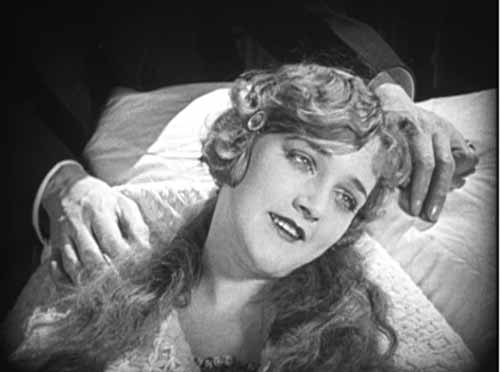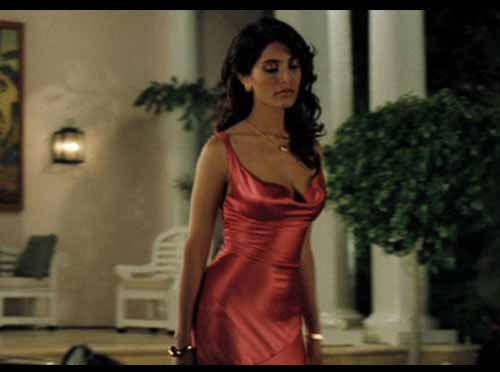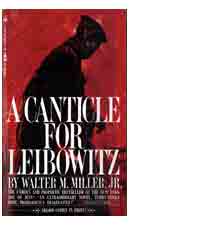
Wife is at the Guthrie, so it’s me and Gnat. She’s watching a Care Bear movie and practicing her burps. Long and loud and clee-ah, as the fellow in “Mary Poppins” sang. She concludes each eruption with “Excuse Me,” and noted that it’s not healthy to hold it in. Yes, but don’t take such relish in it. It’s bad manners. Earlier tonight as we were heading off to dinner, she taunted me by wearing her baseball cap backwards. “And I’m going to wear it in the restaurant,” she said. No, you’re not. We don’t wear hats inside. “George Washington did.” I don’t think so. “Yes he did. And Abraham Lincoln. When we get home we can find it on the Internet.” I told her that men used to wear hats all the time, but there were rules involved. They took them off when speaking to a lady, for example. Why? Because it was polite and showed respect. She liked that. It made me think of a Harold Lloyd movie I’d seen the previous night: Feet First, a 1930 talkie that did not profit from the presence of dialogue. It concluded with another long climb up a skyscraper, and that surprised me – it was just as sophisticated as the famous climb in Safety Last, but it never gets the same attention. It’s like learning that Gershwin wrote a second Rhapsody for piano and orchestra. (He did, you know.) At one point a cigar enters the routine; a man throws it a lot butt out the skyscraper window, and of course it lands in Harold’s clothing, which leads to much twitching and wriggling 20 stories up. Eventually it’s dislodged, and falls into a man’s hat on the sidewalk below. He’s talking to a lady, so he has removed his hat and is holding into his hand. The joke doesn’t work as well today, because now the sight of the fellow standing on the street holding his hat looks contrived. Then it was natural. Anyway. We’re watching “The Backyardigans,” which she liked for a while then didn’t, and was happy to see again. As was I. Most of the animated shows she likes give me headaches, and the Backyardigans has a charm absent from, say, “Fairy Odd Parents.” Seventy degrees on Sunday. Insert obvious, thin, miserably tired global warming reference, and subsequent predictable embrace of same if it means shirt sleeves in March, here. Today’s paper had a big story on the House of 2037, and how climate change will affect the way we live. It presumes that the glum predictions will all come true, our mobility will be constrained by insufficient carbon credits, and we'll have an existence slightly more interesting than the society described in “A Canticle for Lebowitz.” Our houses, for example, will have shutters to protect the solar collectors, because hail – Gaia’s buckshot! – will become more frequent and violent. Kids will all be home-schooled, because the environmental impact of busing kids to school and running schools will be too great. I’m serious. Kids will wear 3D goggles and have personal avatars to teach them. I presume they will not be allowed outside to play, because they will be broasted in a second by solar wind. This would also require a parent to stay home, unless they chain the child to a radiator before biking off to the train station. Another innovation of the Home of Tomorrow that had absolutely nothing to do with homes, per se? A woman who was an “internet bride,” and married a man in China, because they have a female shortage. (Wonder why.) He can’t come back to Minnesota to get her pregnant because he’s lacking the needed carbon credits to use a plane. Whether China forbids him to fly, or the United States forbids him to fly, or some other unnamed agency has laid down the law, we don’t know. We do know that the next three decades will see no advancement in airplane technology whatsoever, I guess. I am not a prophet or the son of a prophet, but I don’t think many women in Minnesota suburbs will be using the internet to marry men in China who live in China and stay in China. A few? Sure. Enough so we have to rethink the basics of home design? Maybe not. The scenario illustrated the incorporation of the videophone in the home, but that's not sexy enough; we have to be reminded that air travel is bad for the planet too, and one day we'll have to pay. With carbon credits. I love how this has already assumed the weight of an actual thing, like a bar of gold. Oh, cars? There’s no garage in the Home of the Future. “Fewer people own cars as more of them walk, bike, use transit and share vehicles.” If you’re elderly, perhaps you’re pulled to the market on a sled. (In the hail!) The cars, naturally, belong to The People: the diagram for the city of the future has a car barn, which house “shared hydrogen or electric vehicles, which are maintained by the community and checked out by residents.” The road in the community “circles the common area for delivery and emergency vehicles only." If people want to live like this, they're welcome to do so. But I don’t doubt that half the people who find all of this attractive and necessary would hesitate to impose it by force of law on all new developments. For starters. The houses reminded me of the “earth sheltered” houses of the 70s, which looked like personal burial mounds. That was thirty years ago. If a newspaper had done a story on the House of 2007 based on what they knew and feared then, they would have shown small huts with solar panels and composting heaps and tiny garages and a nice war glow of Concern for The Right Things shining from the entire project. Didn’t come true, and I doubt the House of 2037 will look like the one in the paper. Especially if the Mr. Fusion personal reactor hits the market in the next ten years. Of all predictions about the weather, this was my favorite: “Minnesota will be warmer and probably wetter overall, but precipitation is likely to come in prodigious amounts interspersed with dry spells, even droughts.” In other words, it will rain, and then it will stop. And then it will rain again. So it’s been a boring weekend, but a fine one. Friday night I watched “Rome,” which was as impressive as ever. Here’s a bumpersticker I’d like to see:
I watched “Casino Royale,” which was the first Bond movie I’ve enjoyed since about 1973. I had no idea so much parkour was involved in the beginning. (That’s the genre of Urban Leaping popularized by certain French movies.) Some critics sniffed at the unimpressive villain, Le Chiffre, and I admit the name sounds like a chilled dessert topping, but I have no interest in rich scheming megalomaniacal villains with elaborate schemes to use space-based gravity shovels to steal Monaco and move it the South Pacific. I hated Roger Moore; I didn’t mind Brosnan, although he seemed like Drakkar Noir model inadvertently promoted to 007 status; I am one of sixteen people who liked Timothy Dalton, and I’m tired of saying that Connery was the best. Yes, he was, but that was a very long time ago. Craig is fine. In fact he’s quite good, and the movie shook off all the old tricks and traits. No more cheap jokes, comic henchmen (Jaws, anyone? Mr. Wint and Mr. Kidd? Criminey, what crap) or leering single-entendres or female characters with names like Beaucou Vagina or Sheeba Lotzotitz. Speaking of which – I know that beauty is in the eye of the beholder and all that, and each era has its own conception of pulchritude, but here’s the love interest in 1922 Harold Lloyd movie:
I guess back then when they said “I’m going to make you a star,” they meant they’d hand-assemble one from parts the morgue threw out. She looks like something you’d find in a box in the last reel of “Seven.” Then there's this lass from Casino Royale; she plays Bond's first curvaceous plot point:
It's possible that 75 years from now people will look at her and think she's a bona fido dog, but possibly not. I think dead people sat up in their coffins in Peru the day these scenes were shot. I paid particular attention to the music, because I’m always interested to see if anyone can make the blood race with the 8373th use of that jangly James Bond theme. Whoever scores tese movies has to compete with the shadow of John Barry, and David Arnold did a great impression of John Barry, back when he was writing melodies that did not take more than a week to deploy. Then again, it’s easy to get that old feeling in a score; just have the brass Bond it up. If this isn’t a musical term, it should be: Bond it up, lads! Which would mean really overblowing every note until it’s slightly sharp, and threatens to sound like an elephant shot in the ass with a bazooka. Okay, time to go. Almost out of juice. Spent the early afternoon in the backyard fixing the gazebo, removing all the holiday lights, putting up spring lights, and listening to “A Canticle for Lebowitz” on the iPod. Yes, that explains the reference. I never read it, although I had a friend in grade school who loved the book and tried to get me to read it. He lent me his copy, and I think I remember what it looked like – a monk on the cover, the usual Bantam typefaces on the front in white. Wonder if it’s on the internet anywhere. Googling; just a moment . . . Yes, here it is:
I wonder now: who started it, back then? Who started the war that managed to destroy everything? Might their motivations, their morals, their ideas, be held more responsible than the instruments of destruction they used? I know this: that was the least important detail to the dystopian cynics then, and probably now as well. Anyway! New Match; new Quirk. See you tomorrow. It's seventy here; the Gazebo is sturdy and relit and the lights in the garden shine again. It's good here again. Not that it was ever bad.
|
|
 |
|
=





 I know why I didn’t read it. I hated post-apocolypse stuff; I always did. That’s one of the miserable things about the 70s, and its lurid indulgence in these fantasies. Beneath the Planet of the Apes, for example, not only adheres to the requirement of the time that all movies must end with the hero’s death; it not only posits the existence of a nuclear weapon that still works after many centuries (and sheds huge amounts of smoke when powered up, if I remember correctly), but it kills the entire planet for its conclusion, after which an omnipotent voiceover tells us that "a green and insignificant planet is now dead." Roll credits.
I know why I didn’t read it. I hated post-apocolypse stuff; I always did. That’s one of the miserable things about the 70s, and its lurid indulgence in these fantasies. Beneath the Planet of the Apes, for example, not only adheres to the requirement of the time that all movies must end with the hero’s death; it not only posits the existence of a nuclear weapon that still works after many centuries (and sheds huge amounts of smoke when powered up, if I remember correctly), but it kills the entire planet for its conclusion, after which an omnipotent voiceover tells us that "a green and insignificant planet is now dead." Roll credits.